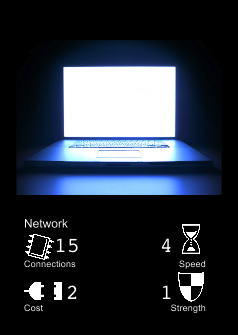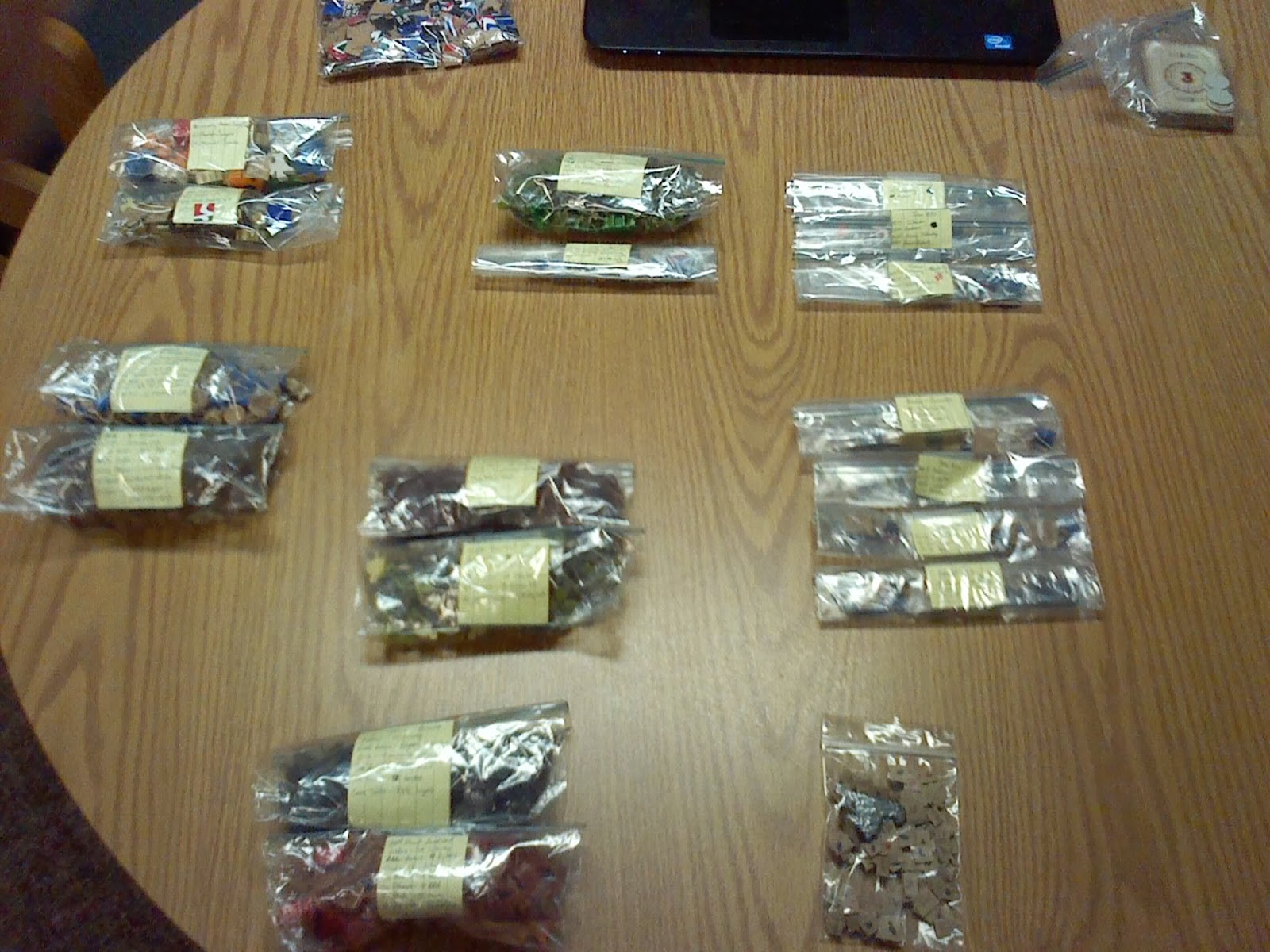Darker Days Expansion.
The thought behind Darker Days was to address some of the problems I had with playing normal settlers. One of those problems was that it wasn't competitive throughout the game for everyone playing. At some point in Settlers of Catan, it is really between just two people, and the others don't really have a chance at at all. Everyone who has played Settlers before has been at that point in the game where they know they cant win. The game then becomes less enjoyable and less interesting. How I dealt with this was adding a few new elements to the game. My goal was to create a variation of the game, so that no one ever feels they don't have a chance to win. The main element I added are the dark development cards. These cards allow you to slow people down, but also catch you up if your behind. These cards allow you to change the game board and your probability of winning. In order to make this work effectively I had to create a board for the game. The board is pictured below:
Another idea I had was to make sevens a more active part of the game, so created a robbers "loot" that you have to discard into, and the next person to roll a seven gets to pick up what the robber has taken.
Dark Development Cards
Some of the Dark Development cards are listed above but are just playing cards with new abilities written on them. The price of these cards are determined by the first three tiles you place in the board. This is so there worth changes every game, and the strategy to get them.- Double Victory Points
- Swap Numbers
- Switch a number chit with another
- Switch Tiles
- Switch a resource tile with another of your choice
- The number on the resources being moved stays
- Market
- collect 3 or more of these and you have the largest market worth 1 victory point
- Effect of receiving the market chip is that you choose a resource that you have a settlement or city on and you can now trade that resource in 2 for 1.(acts like a 2:1 port for a resource of your choice)
- this can't be switched by the player onto another resource. It stays on the first one you choose
- The market chip can be stolen from you if another player plays more market cards than you( the same rules of largest army in regular Settlers of Catan.
- Construction halt
- Place this card on a player and they can only build one thing per turn
- to remove this card you must forfeit collect resources for your turn and roll a 9 or higher
- Whatever the player rolls counts the other players pick up their resources according to the number rolled.
- Close Corridors
- Can build within one space of an opponents settlement or city
- special effect of this card is that if you are in last place in terms of victory points on the board then you can add two roads and a settlement for free. If there is a tie then the effect doesn't happen.
- Master of Greed
- Must reveal before you roll for your turn
- All the resources picked up for the number you roll belong to you
- Destroyer card
- remove one settlement or two roads from a player
- Can't remove two roads that leaves a settlement isolated
- Blocker Card
- Place on a player and they can not pick up resources for a whole round
- Dagger Card
- choose an opponent and take one card from them open-handed
Another idea I had was to make sevens a more active part of the game, so created a robbers "loot" that you have to discard into, and the next person to roll a seven gets to pick up what the robber has taken.
New 7 Rules
- Robbers Treasure Chest
- Players with more than 7 cards discard them into the robbers loot space on the game board, not into the resource bank
- the next player to roll a seven gets to pick up what is in the robbers loot if there anything.
- Rolling a seven moves the coin to a new spot on the glory counter.
Glory Counter
The counter starts in the top left-hand corner and moves to a new spot when a 7 is rolled. The spots marked with blue tape indicate how many dark development cards you draw. The other spots are listed and explained below.
- Spot 2:
- Roll the dice and pick up a resources according to the number the it corresponds to.
- Spot 4
- Pick up a resource of your choice
- Spot 6
- you cant pick up a resource until another 7 is rolled
- what resource is determined by a dice roll
- The final Spot
- move ether a number or a tile
Below are some pictures of what the game looks like with the pieces in it:

.jpg)



.jpg)










